
TARGET 091202
A New Roof
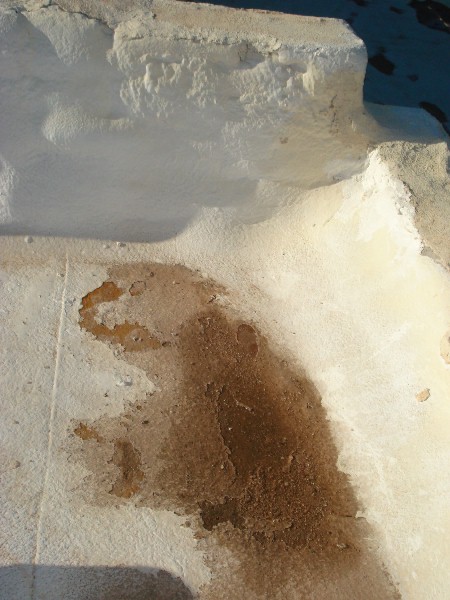
What looks like a bad rendering of a bear, above, is actually a shot of the old roof over our porch. You can see the bear's face, which is simply a place where all the insulation has worn off and now the water leaks through like it is an open faucet. Our roof is flat, and with the age of our home, it has developed sags in it where the rainwater collects and eats away at the insulation.
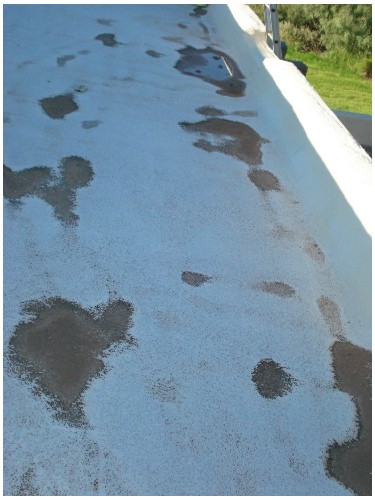
So, as you can see from this wider shot, the need for a new roof to be in place before the "monsoon season" comes was beginning to get critical. The archetect looked at the old one and said the it is still in good shape, strucurally, so it should not be taken out. It would be used to build a new one over it.
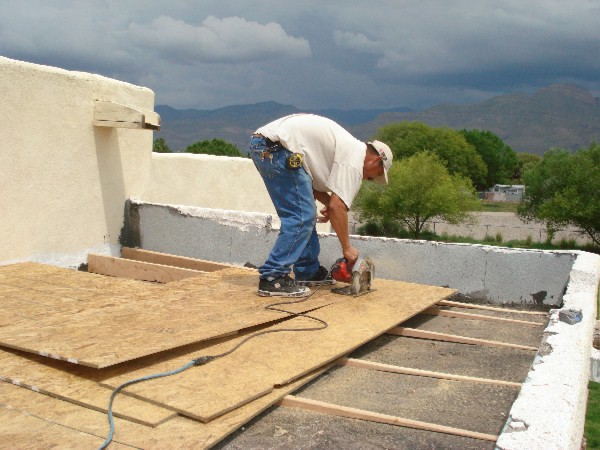
So they cut 2X4s to make a slightly sloping roof and then laid sheeting across it to make a sturdy rooftop. This, however, would never be enough to withstand the desert's harsh elements.
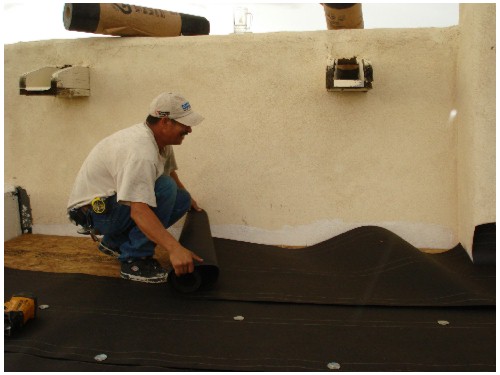
So, beginning at the lowest part, they laid tar paper over the sheeting. Each strip of tar paper was laid overlapping the previous one so that there would be no places where water could seep into the sheeting.
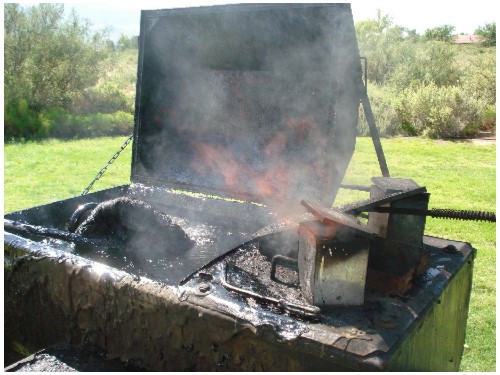
Down on the ground, they had a portable "tar pit". This was in the shape of a small trailer they had pulled behind their truck. There was a large propane tank which fueled the furnace below the tar pit, melting it into a steaming, viscous mass. Large 40-lb lumps of tar were thrown in to melt. One can be seen sinking into the liquid in the picture above. Soon, the odor of melted tar and thick smoke filled the entire area. The propane flame under the tar pit made a very loud "Foooommmm" sound which could be heard for blocks.
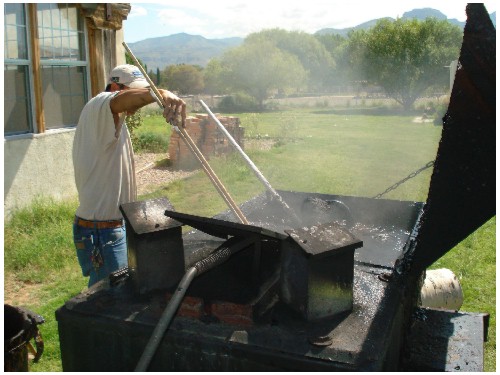
The tar had to be stirred with a long stick until it was all completely melted and ready to be put onto the roof. Now comes the part part... getting the boiling hot liquid up to the roof. Hmmmmm! What to do?
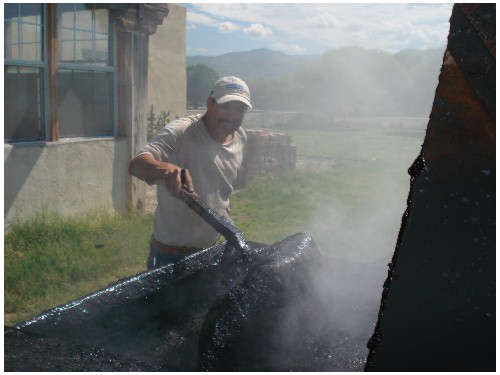
Right before taking the tar to the roof, the worker had to "melt his mop". The mop which would be used to spread the tar was hard and solid with tar from other jobs. So, the worker had to put the mop into the melted tar and stir it around until the tar on it became melted and the mop was pliable. He then had to quickly carry the mop up to the rooftop, and wait for the other worker to bring the tar to him.
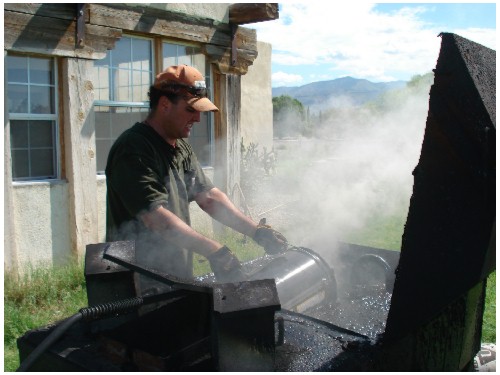
The other worker, wearing very heavy gloves, dipped a large metal can into the hot tar pit, filling the can with about 40 pounds of boiling tar.....
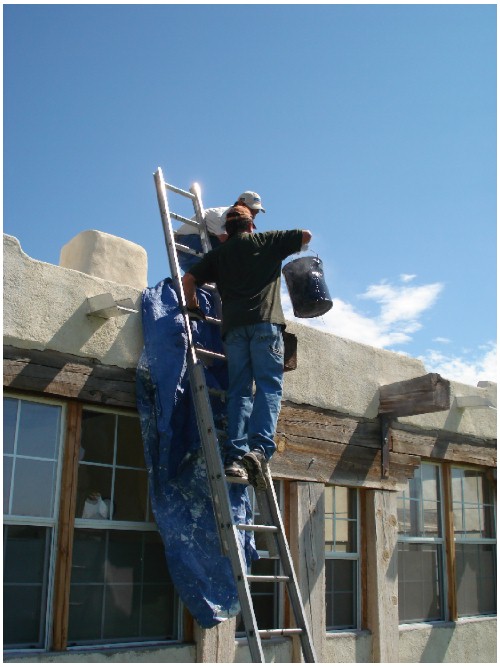
...and very quickly and gingerly carried it to the roof. If the bucket had even touched his pants leg, it would have caused severe burns, so it had to be held away from his body with one arm, all the way up the ladder, while using the other arm to climb.
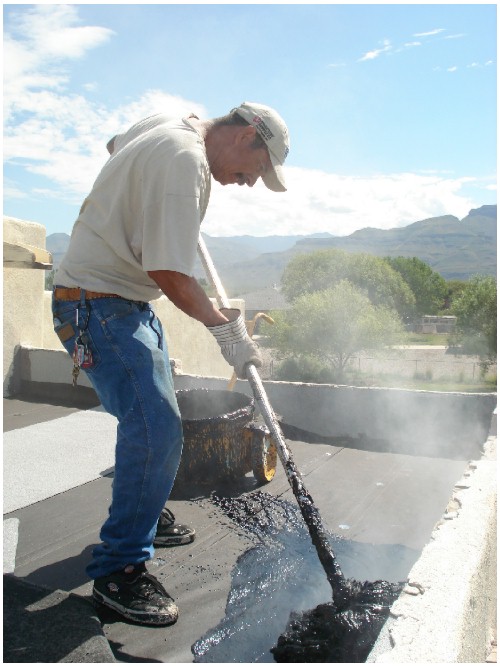
Using the melted mop, the rooftop worker quickly spread the tar across the roof in a singular line near the bottom of the slope......
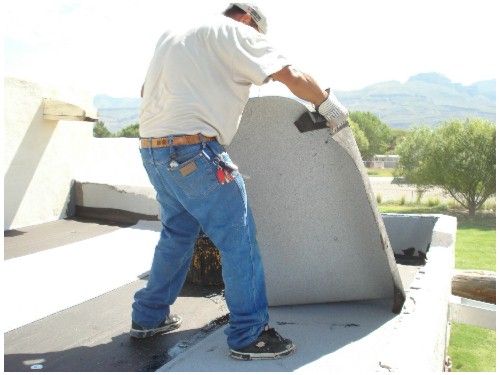
.....over which he laid a strip of roofing material. Once this material was glued into place with the tar, he tarred another strip upward on the slope and laid another sheet of roofing material, overlapping the first to make a secure seal. This continued until the entire roof was covered with roofing material, securely tarred into place.
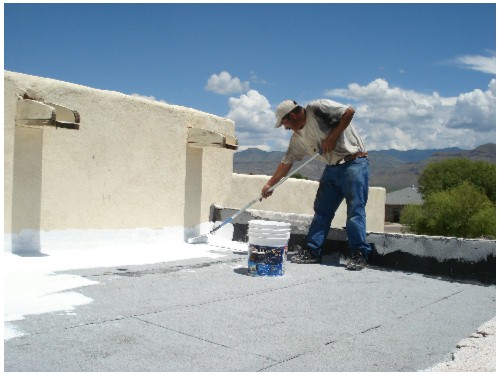
But that's not enough for this crew. They are very professional in their work, and know that a coat of sealer will extend the life of the new roof from around 15 years to around 35. So, a sealant was placed on top of the roofing material. The sealant is snow white, and will reflect around 90% of the heat of the sun, guaranteeing that the roof will not only be totally sealed on top, but that the porch will also be cool and comfortable underneath.
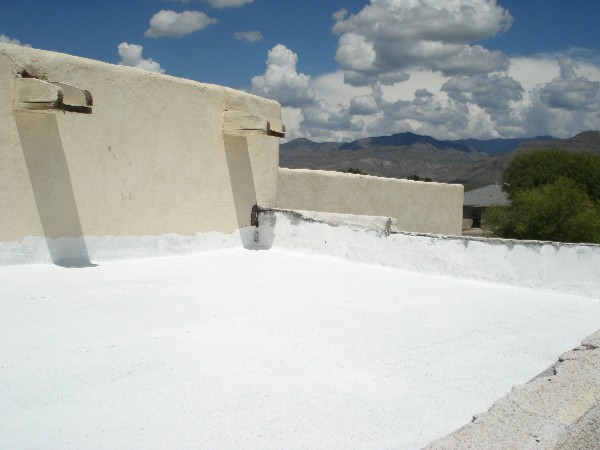
The end result is a beautiful and totally secure rooftop with no sagging places to trap water. The basic underlayment was shaped in such a way that all water which lands on the roof will be funnelled to one of the "canales" (rainspouts) located in the parapet around the roof.
FEEDBACK MAP
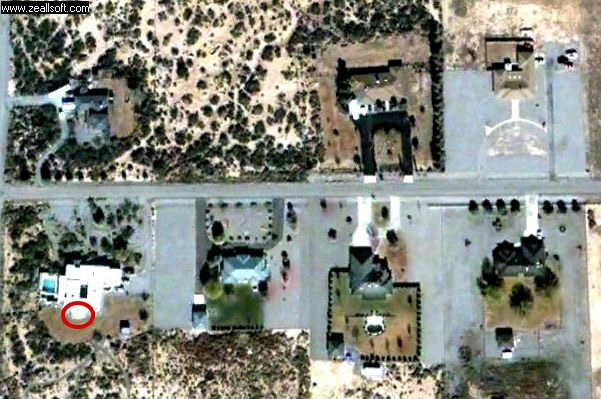
I find myself wondering how many people either kept getting "white" as a perception and so decided to select the big white thing, or how many people decided that the target surely wouldn't be the most blatant thing in the picture, so avoided it. The big white square could act as both an attractor and a distractor, so I'm hoping that you did very well with your dowsing on this one.